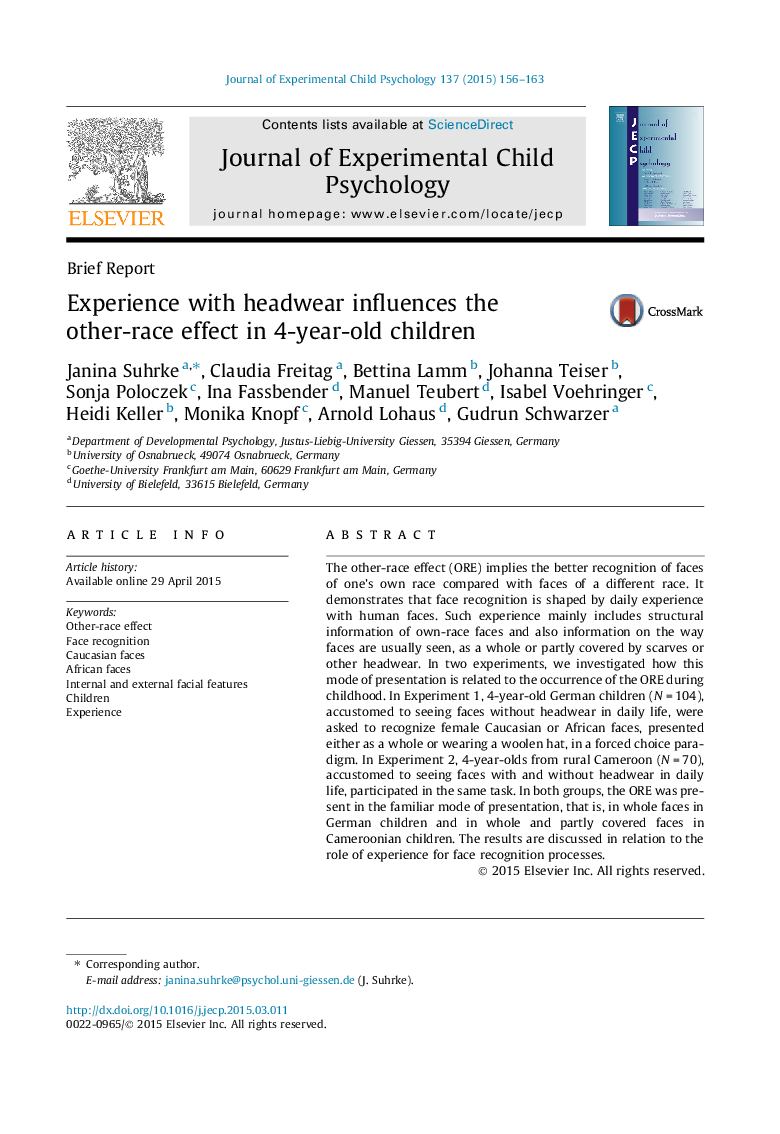| Article ID | Journal | Published Year | Pages | File Type |
|---|---|---|---|---|
| 7275068 | Journal of Experimental Child Psychology | 2015 | 8 Pages |
Abstract
The other-race effect (ORE) implies the better recognition of faces of one's own race compared with faces of a different race. It demonstrates that face recognition is shaped by daily experience with human faces. Such experience mainly includes structural information of own-race faces and also information on the way faces are usually seen, as a whole or partly covered by scarves or other headwear. In two experiments, we investigated how this mode of presentation is related to the occurrence of the ORE during childhood. In Experiment 1, 4-year-old German children (NÂ =Â 104), accustomed to seeing faces without headwear in daily life, were asked to recognize female Caucasian or African faces, presented either as a whole or wearing a woolen hat, in a forced choice paradigm. In Experiment 2, 4-year-olds from rural Cameroon (NÂ =Â 70), accustomed to seeing faces with and without headwear in daily life, participated in the same task. In both groups, the ORE was present in the familiar mode of presentation, that is, in whole faces in German children and in whole and partly covered faces in Cameroonian children. The results are discussed in relation to the role of experience for face recognition processes.
Related Topics
Social Sciences and Humanities
Psychology
Developmental and Educational Psychology
Authors
Janina Suhrke, Claudia Freitag, Bettina Lamm, Johanna Teiser, Sonja Poloczek, Ina Fassbender, Manuel Teubert, Isabel Voehringer, Heidi Keller, Monika Knopf, Arnold Lohaus, Gudrun Schwarzer,
